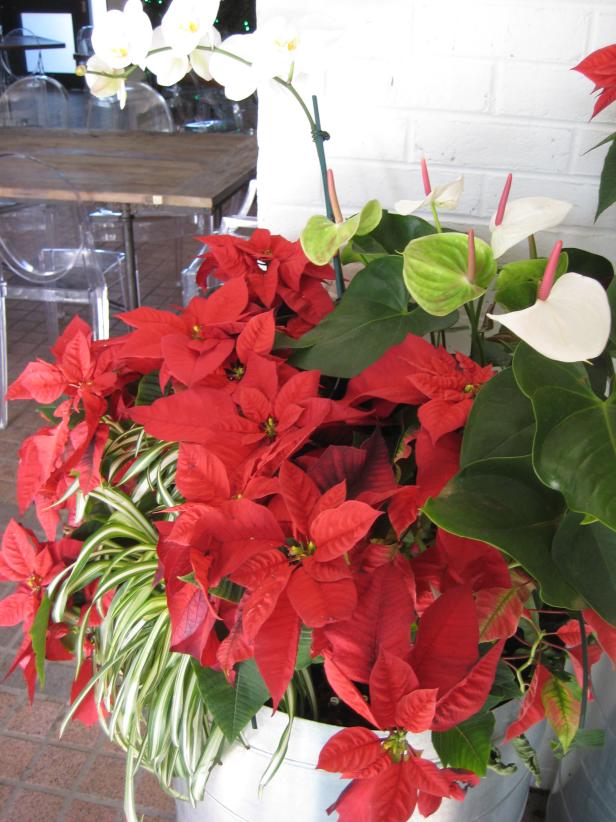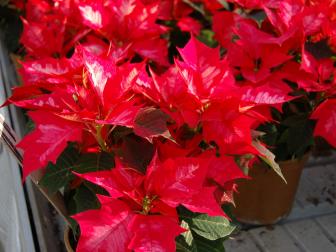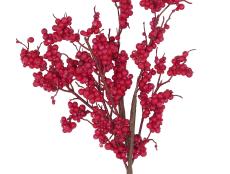Poinsettia Care Through Winter (and Beyond)
This iconic holiday plant has tropical roots. Get tips on keeping your poinsettia looking its best all year.

Perhaps no flower represents the winter holidays like the poinsettia. But these festive plants, which range from the traditional red to pale yellow, can be a mystery when it comes to care and maintenance. Here are some tips on poinsettia care that can help extend those blooms as long as possible — and maybe even encourage your poinsettia to bloom again next year.
Perfect Poinsettias: Using the Season's Favorite Flower
Warm Poinsettias With Ample Sunlight
This may seem strange due to their holiday connotations, but poinsettias are tropical plants. Provide lots of sunlight — a sunny window with east, west, or southern exposure is best. Also try to keep the temperature between 65 and 70 degrees during the day, keeping in mind that the area around a drafty window can be quite a bit cooler than the rest of the room. If your plant's leaves are touching a cold window, they may drop off. At night, poinsettias like a slightly lower temperature (55 – 60 degrees), but avoid drastic drops in temperatures.
How to Water Poinsettias
Make sure to water the poinsettia whenever the surface of the soil feels dry. Give the plant a good watering, but don't flood or soak it — gravel in the bottom of the pot will help keep the roots dry. If your home is dry during the winter months, a humidifier or plant mister can help your plant stay hydrated.
How to Prevent Leaf Loss
If your plant starts to lose leaves, there are a few likely culprits. Ask yourself these questions: Is the plant resting against a cold window or near a draft? Is it too warm or dry in the room? Is the plant thirsty?
If the leaves wilt, and the soil gets dry to the touch, water your poinsettia right away. But remember: Wilting or dropping leaves can also be a sign of over watering. If the soil is soggy when the leaves fall, you've probably watered too much.
Encouraging Poinsettias to Rebloom
Poinsettias can stay attractive for months. But it's tricky to get them to re-bloom — that is, unless you live in a subtropical area. Then you can transplant them to your garden in January, and let the natural changes in daylight trigger their color later in the year.
To coax your plant back into bloom, let it dry out gradually starting in April. Water just enough to keep the stem from shriveling, and put the plant in a spot that stays about 60 degrees.
In mid-May, prune the stems to 4 inches high and repot the poinsettia in a slightly larger pot. Move it to a warm location with good light and resume watering. When new growth emerges, fertilize every two weeks with a complete fertilizer.
In July, pinch back the stems. Pinch again in mid-August. Poinsettias need 10 weeks of 12 hours or less of sunlight each day to show color. For Christmas flowers, keep the plant in complete darkness from 5 p.m. to 8 a.m. daily, starting around Oct. 1.
This is too much work for most of us, so don't feel bad if you compost your poinsettia after you've enjoyed it indoors.
Plant and Grow Poinsettias in Your Garden
These tropical beauties can flourish outdoors in warm-winter areas.








































